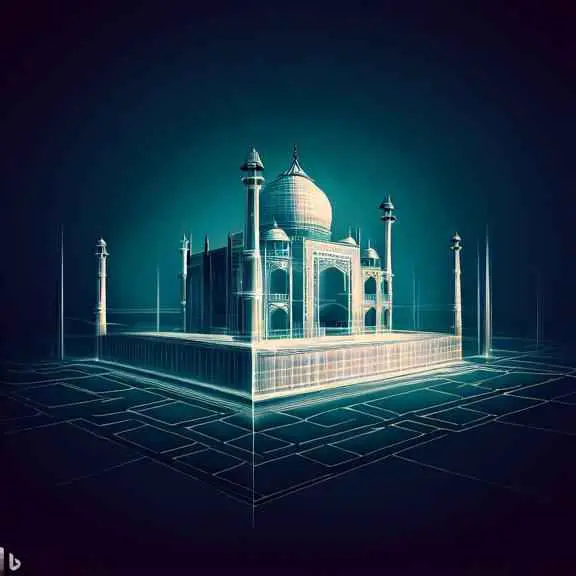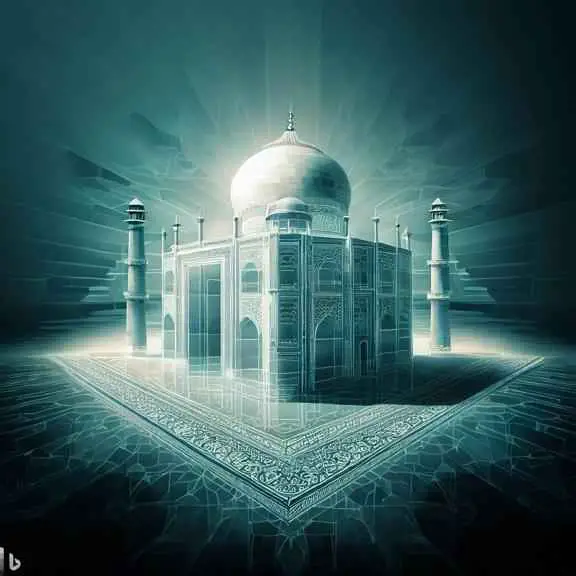Paragraph on
Taj Mahal
for all Class, Words
by Tourism on
Taj Mahal is a mausoleum located in Agra, India, and is one of the seven wonders of the world. It was built by the Mughal emperor Shah Jahan…, please continue reading.

Table of Content
Ad
The Paragraph on Taj Mahal
Ad

Questions about Taj Mahal
Ad
Taj Mahal is a mausoleum located in Agra, India, and is one of the seven wonders of the world. It was built by the Mughal emperor Shah Jahan as a tribute to his beloved wife Mumtaz Mahal after she passed away while giving birth to her 14th child. The construction of this magnificent structure took around 22 years to complete, and it involved skilled artisans, laborers, and artists from all over the world. The Taj Mahal is made entirely of white marble and features intricate carvings and precious stone inlays, and it has become a symbol of love, devotion, and eternal beauty. Every year, millions of visitors from all around the world come to see this masterpiece of Islamic architecture, which is a UNESCO World Heritage site.
- Who built the Taj Mahal?
Answer: The Mughal emperor Shah Jahan built the Taj Mahal.
- Why did Shah Jahan build the Taj Mahal?
Answer: Shah Jahan built the Taj Mahal in memory of his wife, Mumtaz Mahal.
- What is the Taj Mahal made of?
Answer: The Taj Mahal is made entirely of white marble.
- How long did it take to build the Taj Mahal?
Answer: The construction of the Taj Mahal took around 22 years to complete.
- What is the Taj Mahal a symbol of?
Answer: The Taj Mahal is a symbol of love, devotion, and eternal beauty.
- Where is the Taj Mahal located?
Answer: The Taj Mahal is located in Agra, India.
- What kind of architecture is the Taj Mahal?
Answer: The Taj Mahal is an example of Islamic architecture.
- Is the Taj Mahal a UNESCO World Heritage site?
Answer: Yes, the Taj Mahal is a UNESCO World Heritage site.
- What kind of people were involved in the construction of the Taj Mahal?
Answer: Skilled artisans, laborers, and artists from all over the world were involved in the construction of the Taj Mahal.
- How many visitors come to see the Taj Mahal every year?
Answer: Millions of visitors from all around the world come to see the Taj Mahal every year.

Vocabulary related to Taj Mahal
Ad
Vocabulary Words:
- Mausoleum: a building, especially a large and stately one, housing a tomb or tombs.
Usage: The Taj Mahal is a mausoleum that houses the tomb of Mumtaz Mahal.
- Tribute: an act, statement or gift that is intended to show gratitude, respect, or admiration.
Usage: Shah Jahan built the Taj Mahal as a tribute to his beloved wife.
- Magnificent: impressively beautiful, elaborate, or extravagant.
Usage: The Taj Mahal is a magnificent structure that features intricate carvings and precious stone inlays.
- Inlays: a design or pattern made by inserting pieces of a different, often contrasting material such as precious stones or ivory.
Usage: The Taj Mahal features precious stone inlays that add to its beauty.
- Symbol: a thing that represents or stands for something else, especially an idea or quality.
Usage: The Taj Mahal is a symbol of love, devotion, and eternal beauty.
- Devotion: love, loyalty, or enthusiasm for a person, activity, or cause.
Usage: Shah Jahan’s devotion to his wife is evident in the construction of the Taj Mahal.
- Masterpiece: a work of outstanding artistry, skill, or workmanship.
Usage: The Taj Mahal is considered a masterpiece of Islamic architecture.
- Architecture: the art or practice of designing and constructing buildings.
Usage: The Taj Mahal is an example of Islamic architecture.
- Artisans: a worker in a skilled trade, especially one that involves making things by hand.
Usage: Artisans from all over the world were involved in the construction of the Taj Mahal.
- Laborers: a person who does hard physical work for wages.
Usage: Thousands of laborers worked on the construction of the Taj Mahal.
- Eternal: lasting or existing forever; without end or beginning.
Usage: The Taj Mahal is a symbol of eternal love.
- Carvings: cuts or shapes made by carving or engraving a hard material such as stone or wood.
Usage: The Taj Mahal features intricate carvings that depict scenes from nature and Islamic art.
- Precious: of great value or cherished.
Usage: The Taj Mahal features precious stone inlays that add to its beauty and value.
- Skilled: having the necessary abilities or talents to do something well.
Usage: The construction of the Taj Mahal involved skilled artisans and laborers.
- UNESCO: The United Nations Educational, Scientific and Cultural Organization.
Usage: The Taj Mahal is a UNESCO World Heritage site.

Structure of the sample "Taj Mahal" paragraph
Ad
Cohesion and coherence:
The paragraph begins with an introduction of the Taj Mahal, stating its significance as a mausoleum, its location in Agra, India, and the reason why it was built by emperor Shah Jahan. It then describes the structure of the Taj Mahal and its features, including its intricate carvings and precious stone inlays, and establishes its importance as a symbol of love, devotion, and eternal beauty. It then ends with a statement on its popularity as a tourist destination.
The paragraph uses transitional words like “and” and “which” to connect ideas and maintain coherence. Additionally, each sentence builds upon the previous sentence, leading to a logical and cohesive structure. There are no abrupt shifts in topic, and the paragraph is well-organized and easy to follow.
